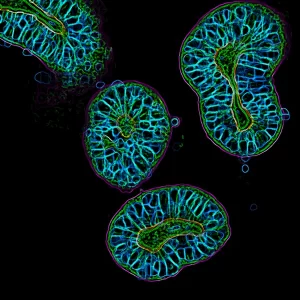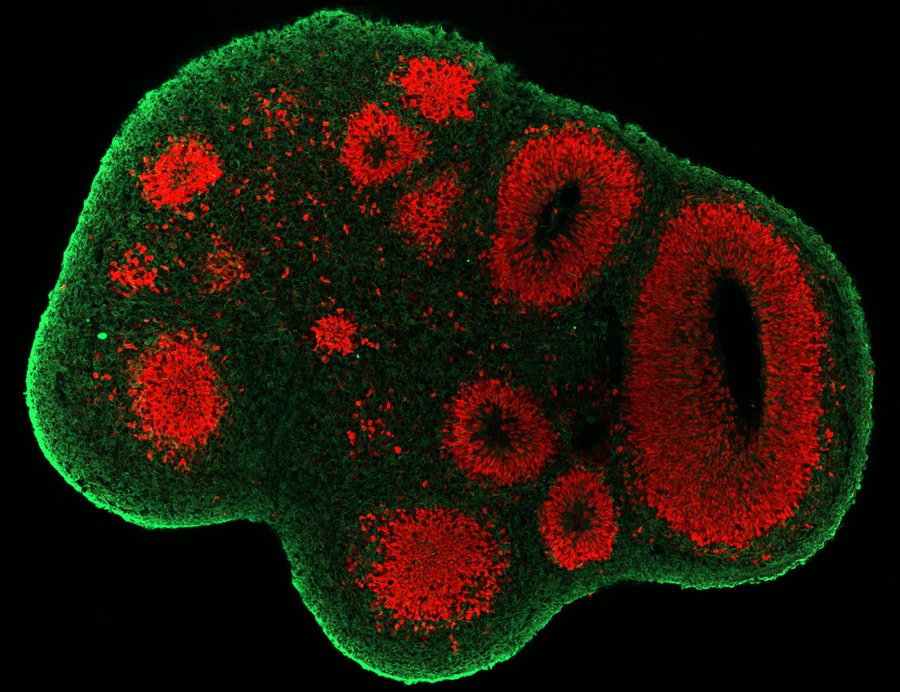In the last decade, the interest in human stem cells in therapy increased due to the demand for new technologies for curing particular diseases. Some time ago, “organoids”- organs-like structures from stem cells in our body were created, just like in a science fiction book. Organoids can provide knowledge about the complexity of the organs, how they work, grow, or even how the diseases form on them. However, this new “tool” raises several ethical and moral issues.
Ethics behind the use of human stem cells to grow the brain
Most attention gets to brain organoids as the matter of undefined existence of developed consciousness as it is the characteristic of the brain. However, is the creation of new healthy organs beneficial for society to cure diseases located in the brain? The question is: is it ethical to deny possible new therapy or to create something that can be conscious on its own?
The trend in our society is “we want to live as long as possible”; therefore, the pharmaceutical market is progressing. However, therapy does not need to be based on chemicals or operations; innovations like organoids allow researchers to produce healthy and functional human organs perfect for transplanting. It is easier to access than waiting for the donor to appear. Transplanting a new organ in the place of an ill one might be a more efficient technique to cure some diseases.
However, some conditions are in the brain, and patients usually are treated for psychiatric symptoms. In the case of a tumor, it might not be that hard to see the cause, but what about diseases where we cannot find a material error in the brain that results in the psychiatric condition? Therefore, brain organoids could be new therapy in treating psychiatric patients.
Little “brains”
 These tiny organs, created in the lab, might have the potential to help people whose disease has no defined cause. However, these little “brains” can be compared to only one brain region, as they are not as complex as the main decisive organ in our body. There was no confirmation that it could be used in therapy. The study is at its beginning – not able to create a whole brain. Therefore, we only can speculate that someday we can get a complex thinking organ.
These tiny organs, created in the lab, might have the potential to help people whose disease has no defined cause. However, these little “brains” can be compared to only one brain region, as they are not as complex as the main decisive organ in our body. There was no confirmation that it could be used in therapy. The study is at its beginning – not able to create a whole brain. Therefore, we only can speculate that someday we can get a complex thinking organ.
If the organoids are created to mimic the brain, they also should be conscious. However, this characteristic is hard to define as no person on earth has the equipment and an idea of how to measure it. It also raises the problem with human dignity as many people see the brain as a characteristic that sets us apart from animals. If the research would develop, they might transport this human brain-like structure into the animal so the line between humans and animals could blur.
Human brain in animals?
The research on animals is crucial as in all-new researchers about new therapy technologies study usually contains the stage of animal testing. In this case, for example, mice could have transplanted human brain organoids. As a result, society might be concerned that we would create a conscious animal, thinking and behaving like us. It might sound surrealistic, but people imagine that those animals could take over the world, like in the movies.
Growing the human brain in animals is not a serious consideration; transplanting them might give insight into diseases like dementia or schizophrenia. As a result, easier finding treatments.
Humanity is an advanced society that is curious about the world and how to make it more comfortable. We created many devices or treatments to make our life more enjoyable. The dream of living long and not aging also influenced the topics of nowadays researchers – the creation of organoids. These structures mightraise ethical concerns the same way the studies on stem cells did. However, brain organoids are most controversial as the brain is still an unknown subject.
The treatment of diseases
For many, creating a “new brain” might be unethical, giving the idea of the conscious brain on a Petri dish or transplanting it into the animal so mice could be like humans. Organoids experiment intended to help find the cause and treatment of diseases. For example, dementia is not a rare disease. The tiny brain structures could help understand it and achieve the goal of a more comfortable life. We should ask ourselves: Do we want to make our life easy and comfortable, without thinking about consequences? Or think about ethical concerns regarding experiments that might improve life?
Maria Maciejewska, DP2
Sources:
- “Society Is Not Ready to Make Human Brains.” ScienceDaily, www.sciencedaily.com/releases/2021/04/210408112321.htm. Accessed 27 Oct. 2021
“Studies That Make Brainlike Structures or Add Human Cells to Animal Brains Are Ethical, for Now, Panel Says.” Www.science.org, www.science.org/content/article/studies-make-brainlike-structures-or-add-human-cells-animal-brains-are-ethical-now. Accessed 25 Oct. 2021. - “New Report Dissects Ethics of Emerging Human Brain Cell Models.” The Scientist Magazine®, www.the-scientist.com/news-opinion/new-report-dissects-ethics-of-emerging-human-brain-cell-models-68661. Accessed 25 Oct. 2021.
